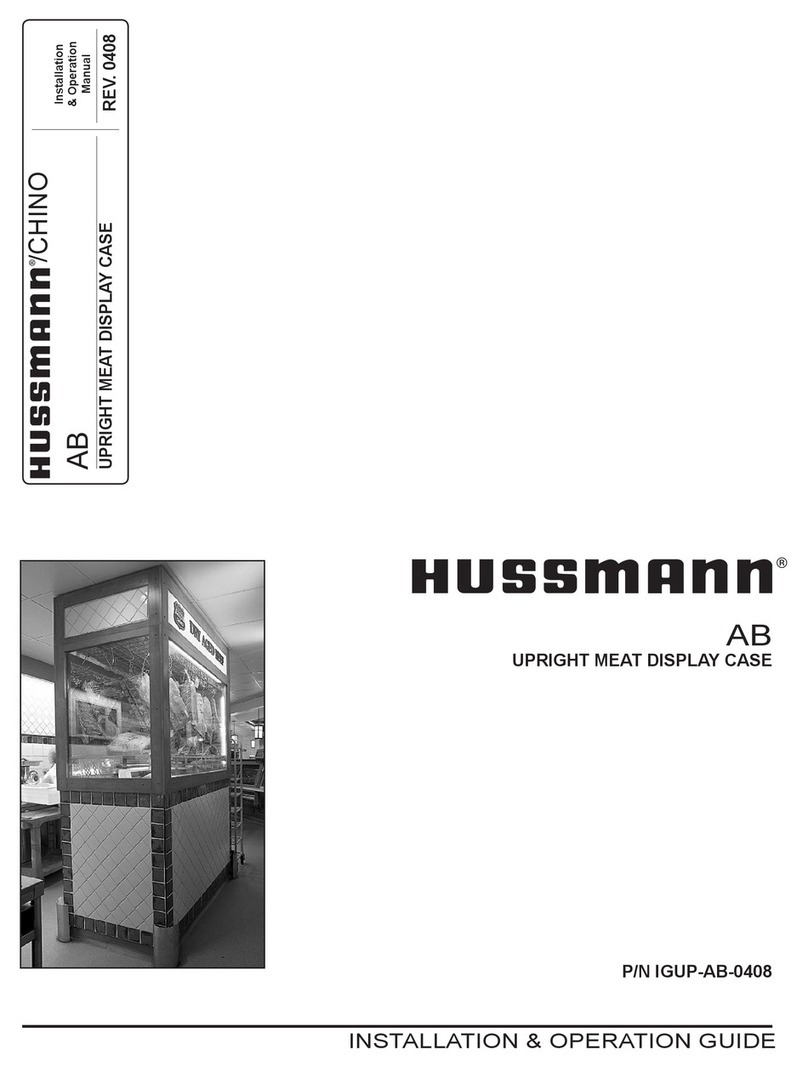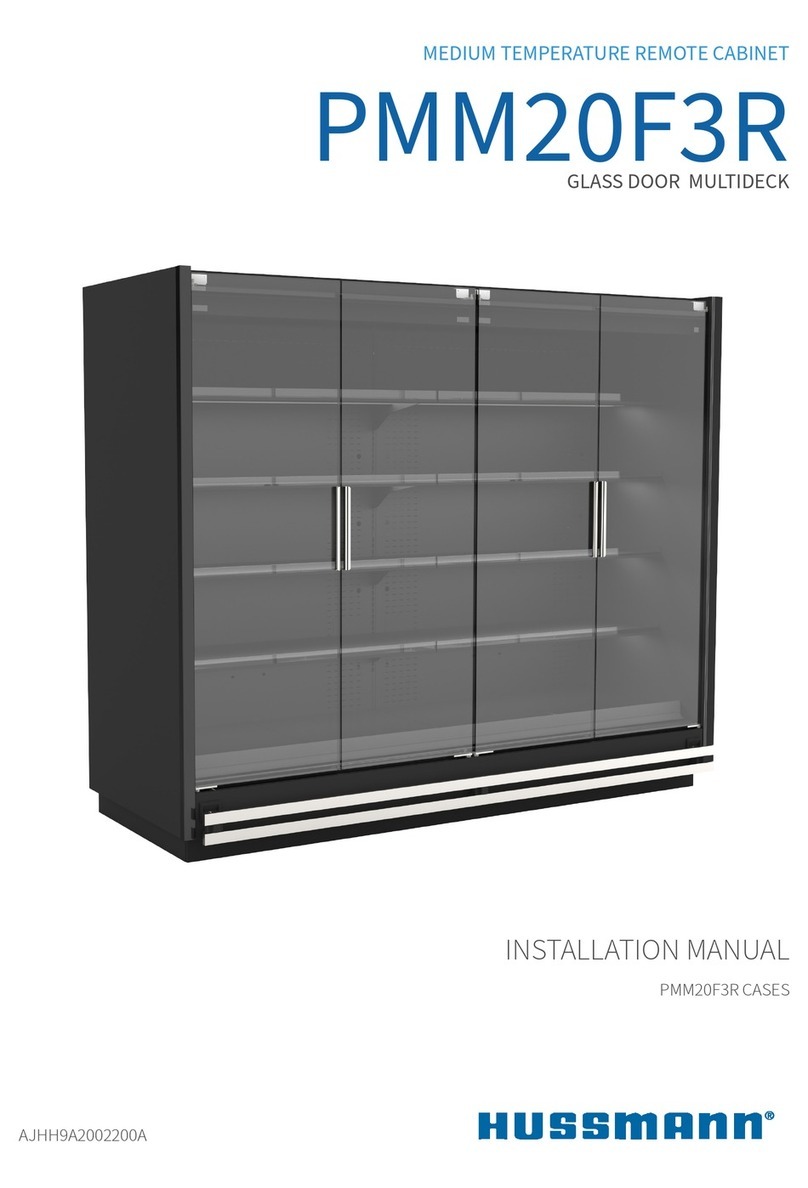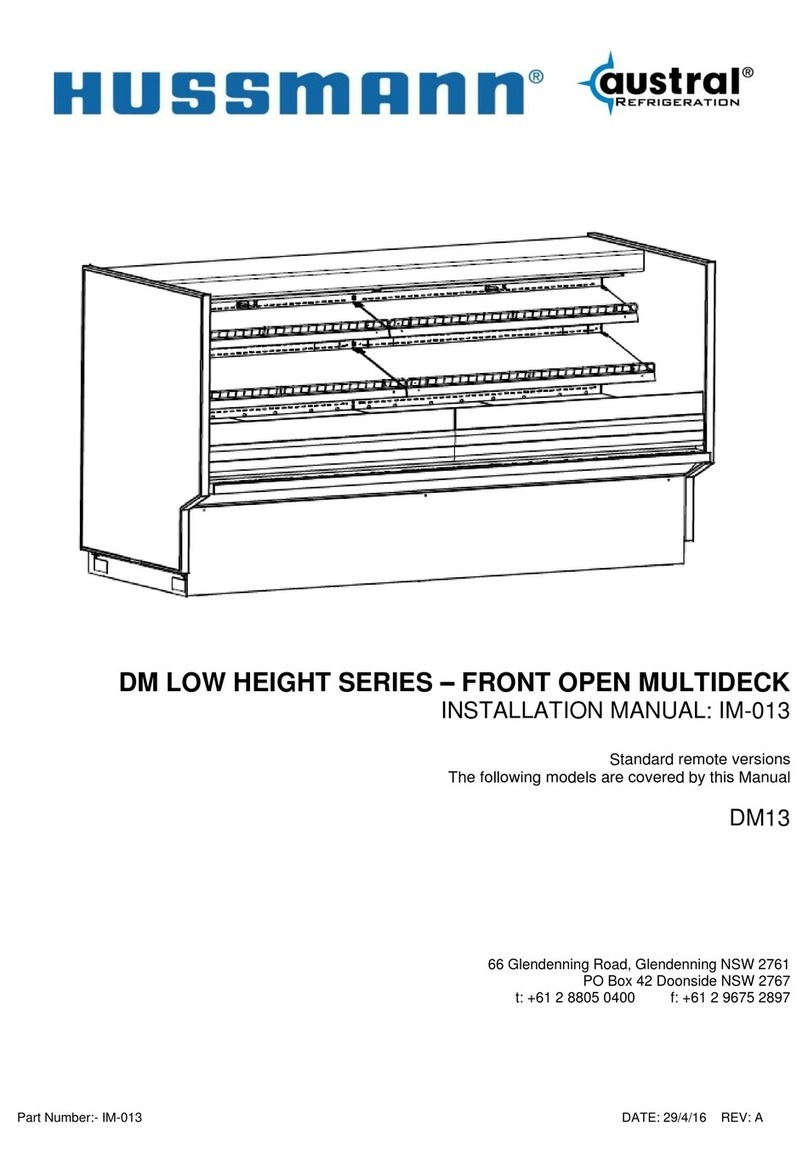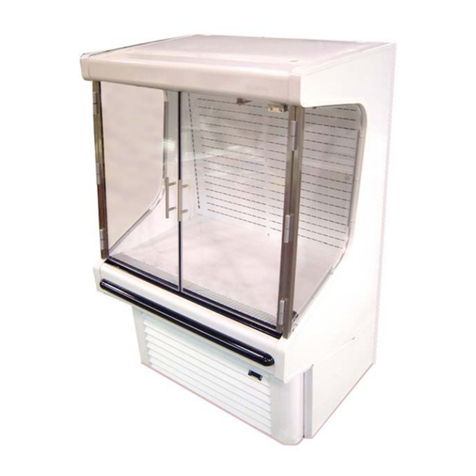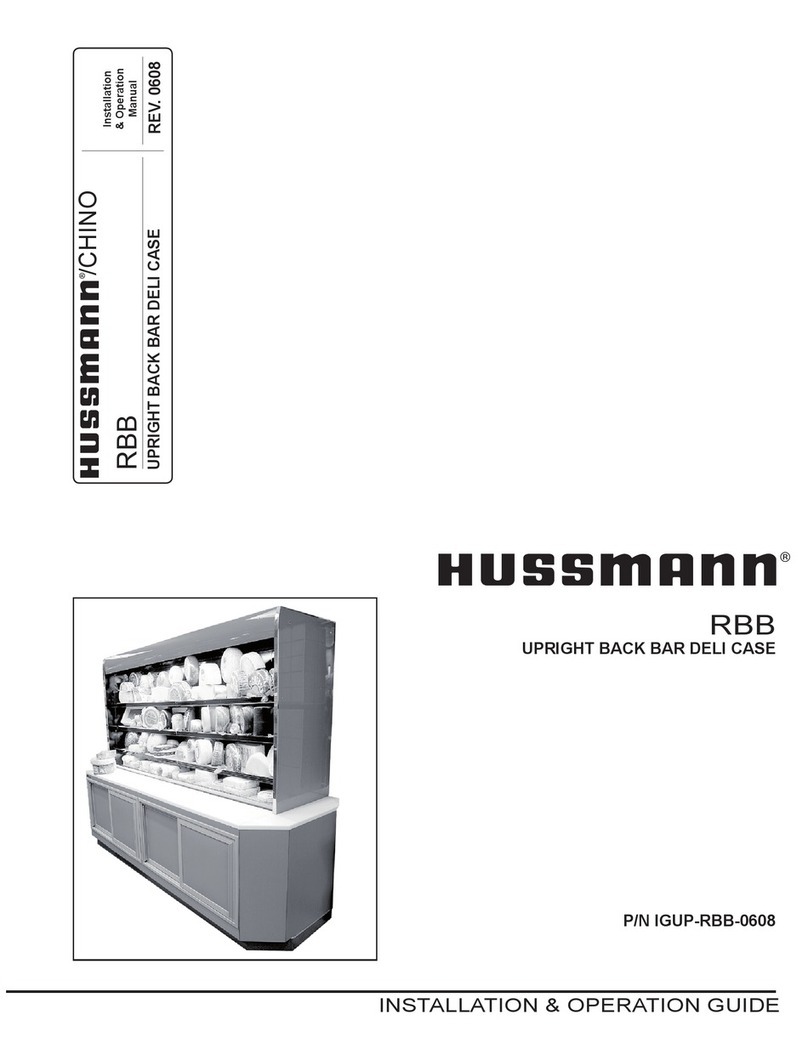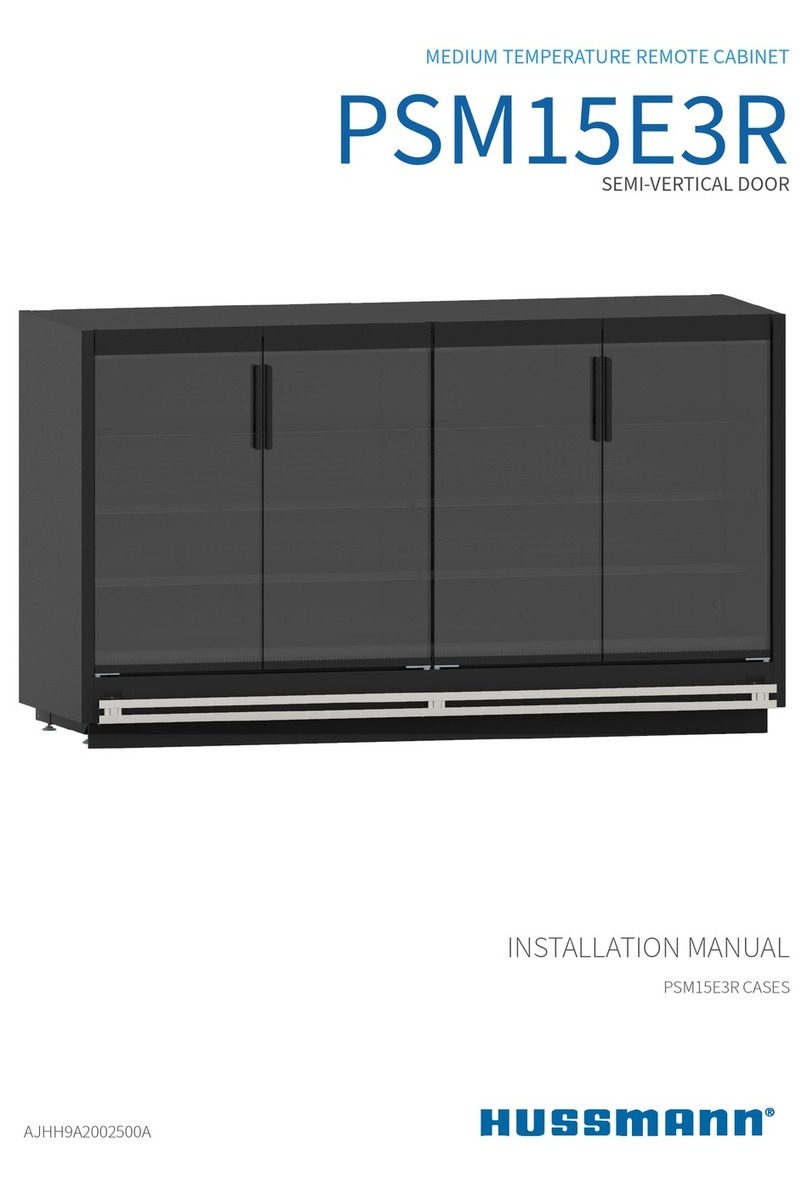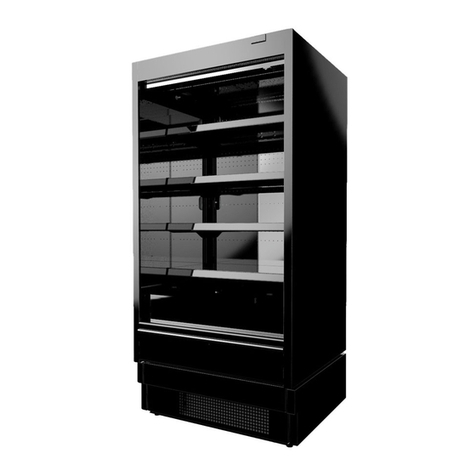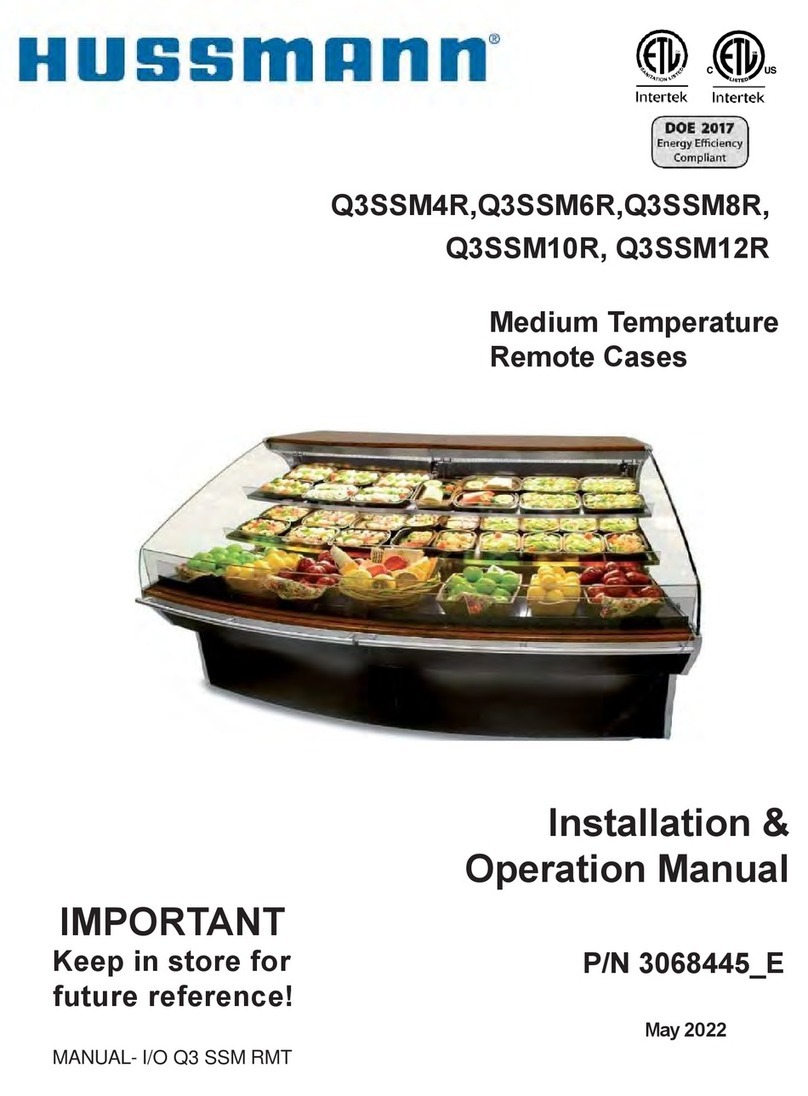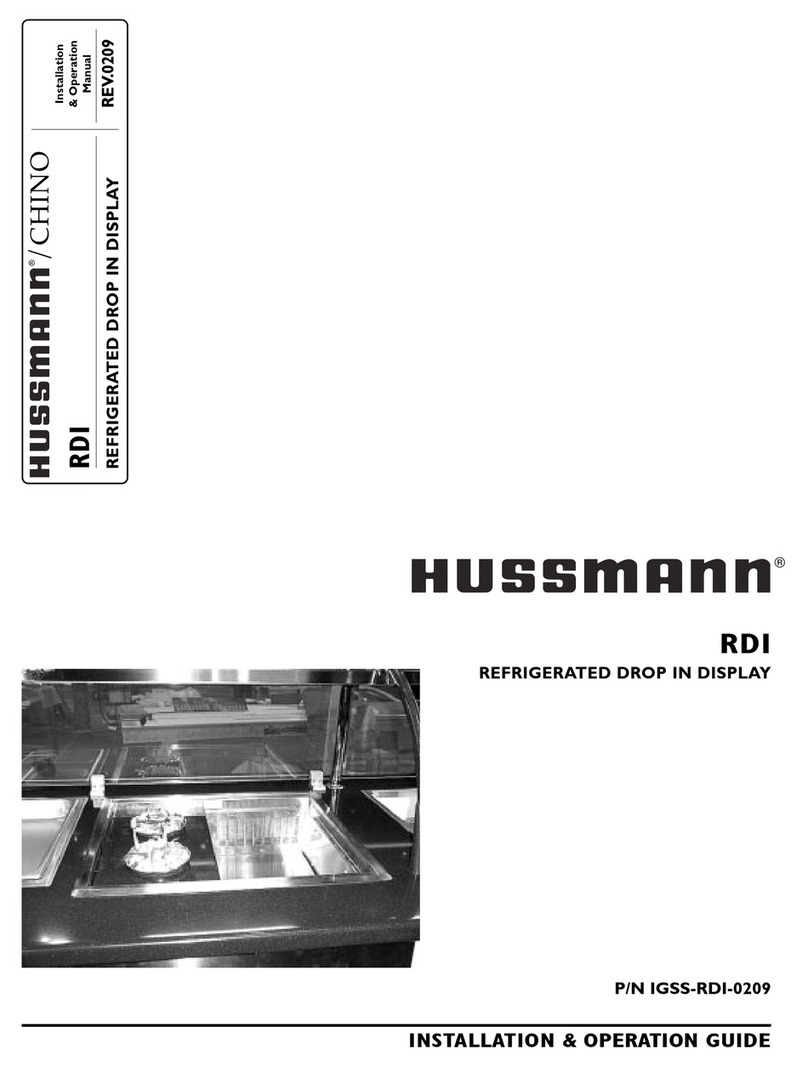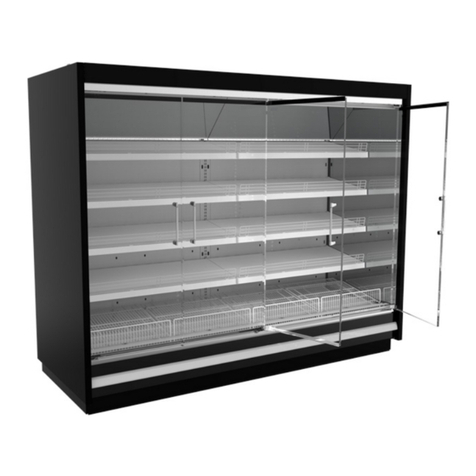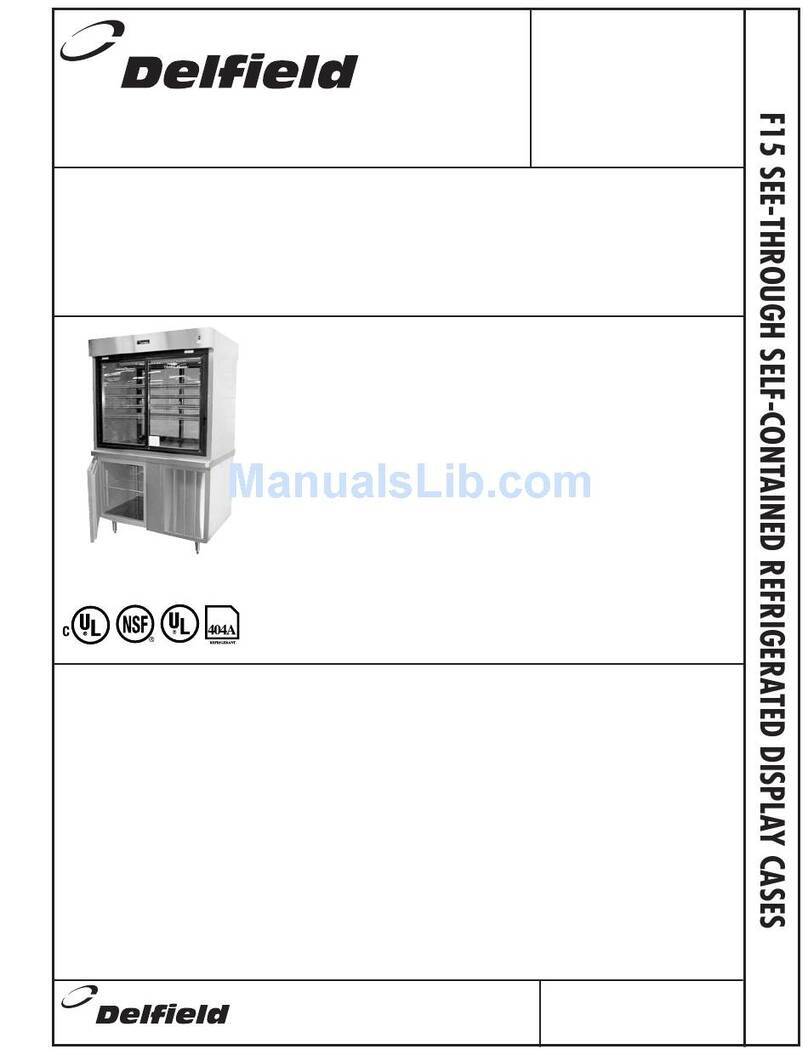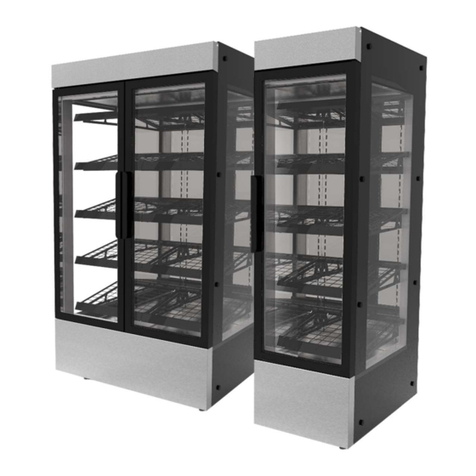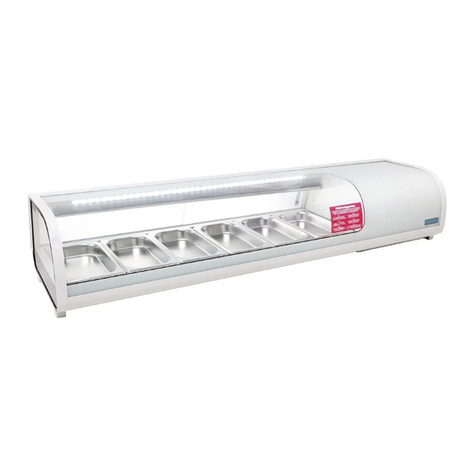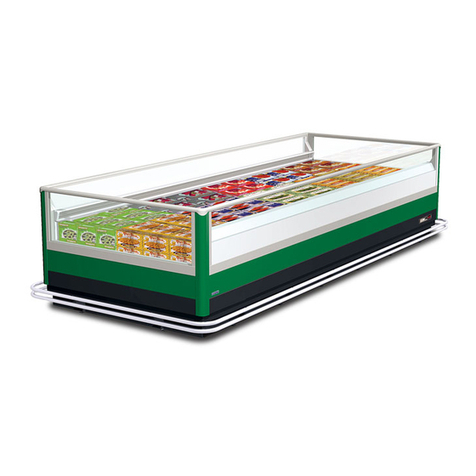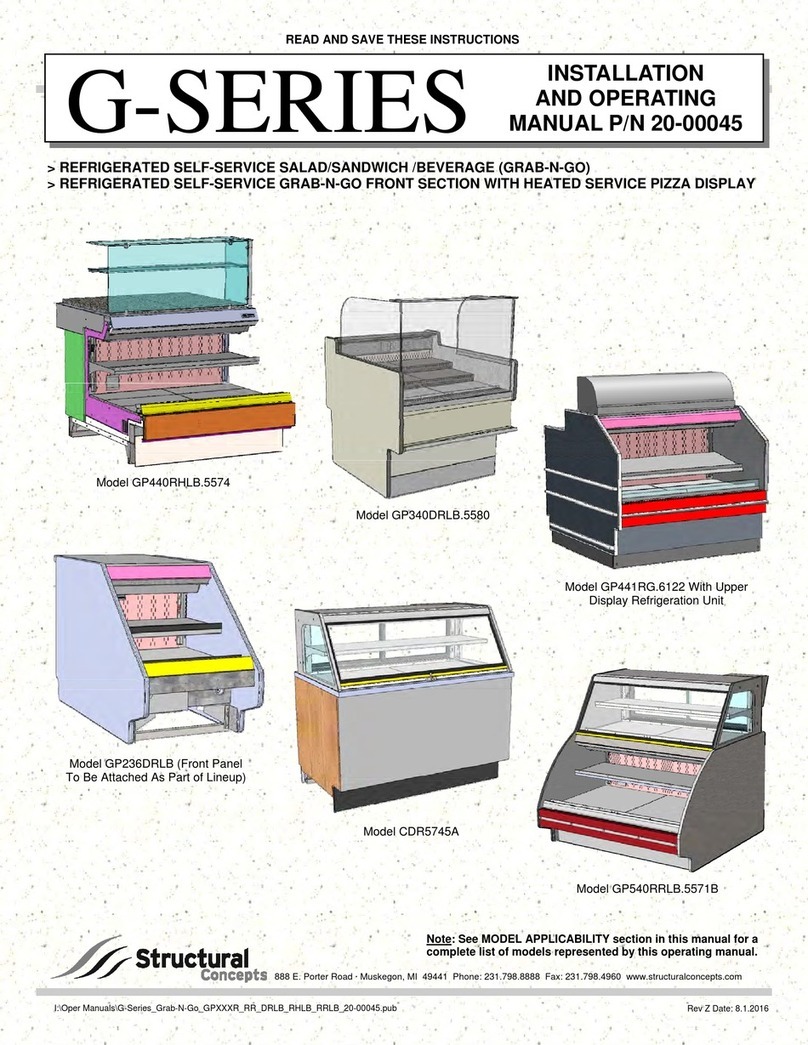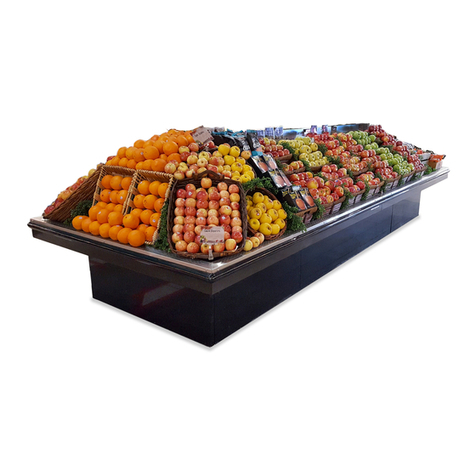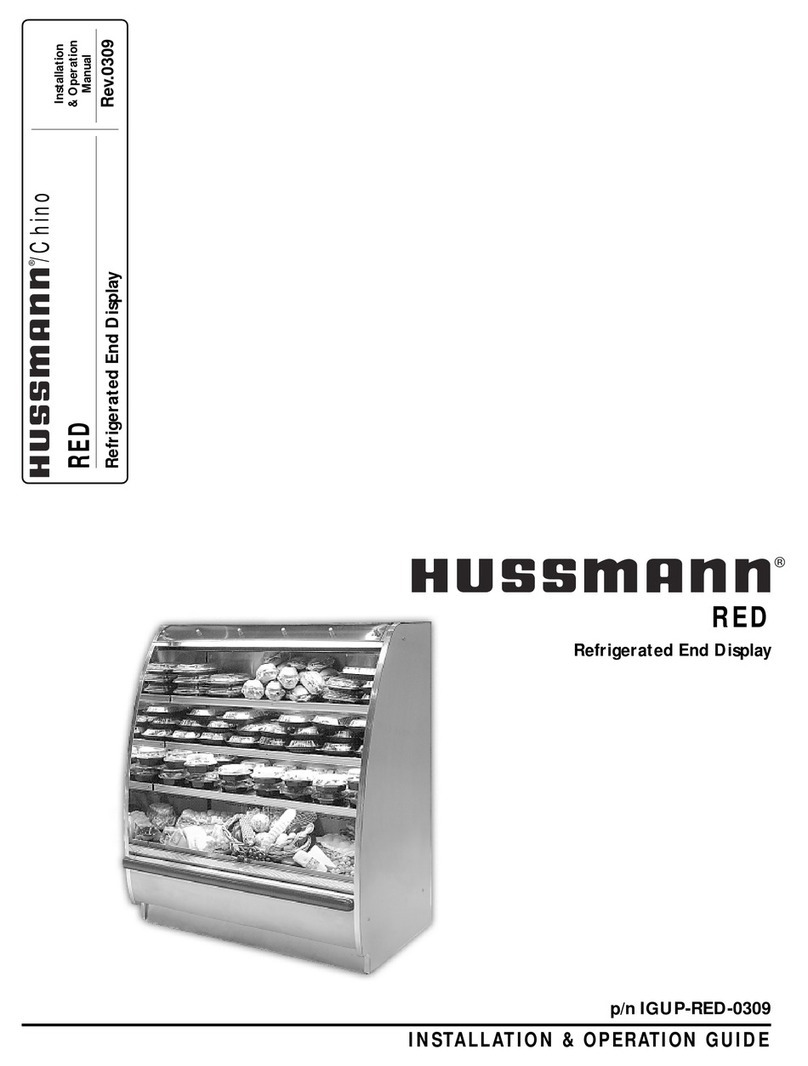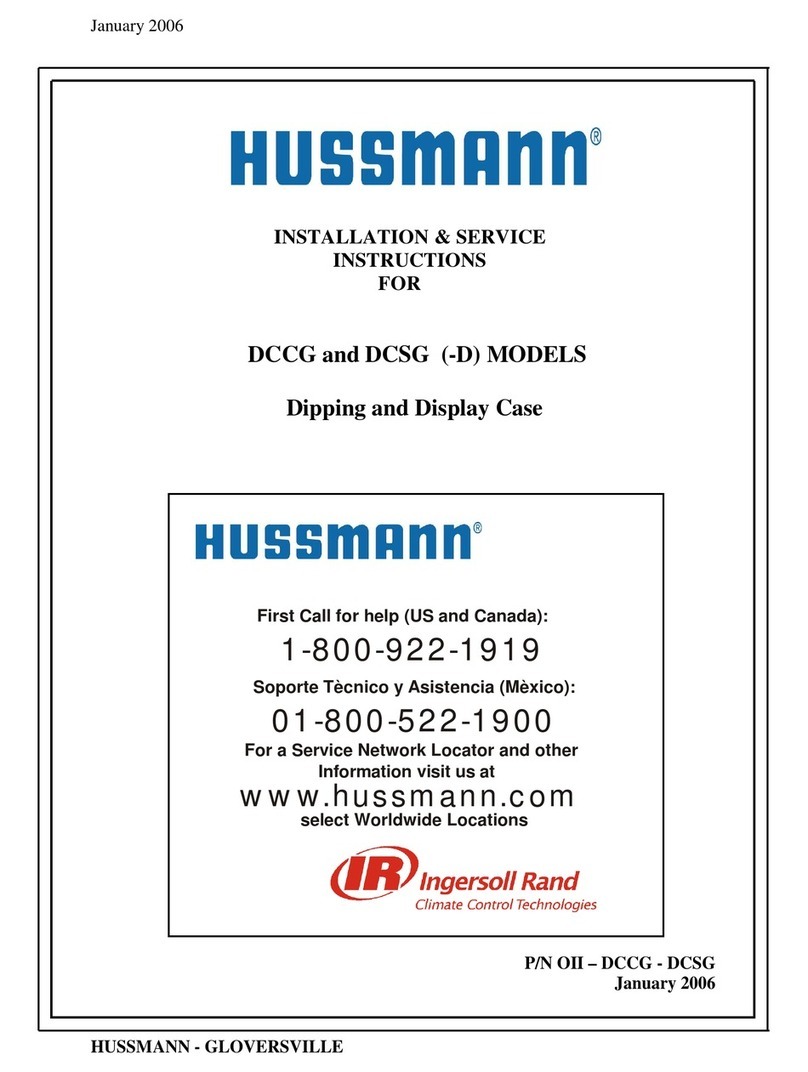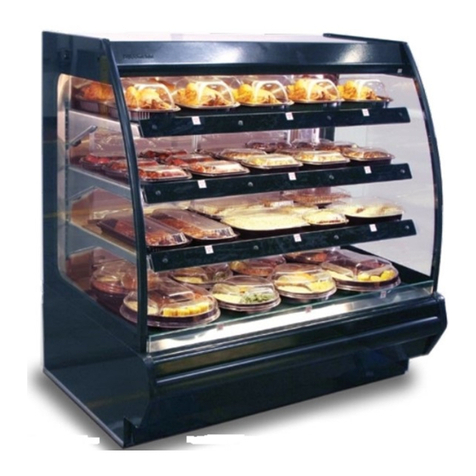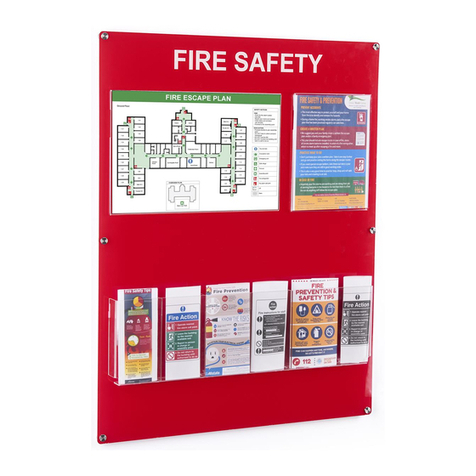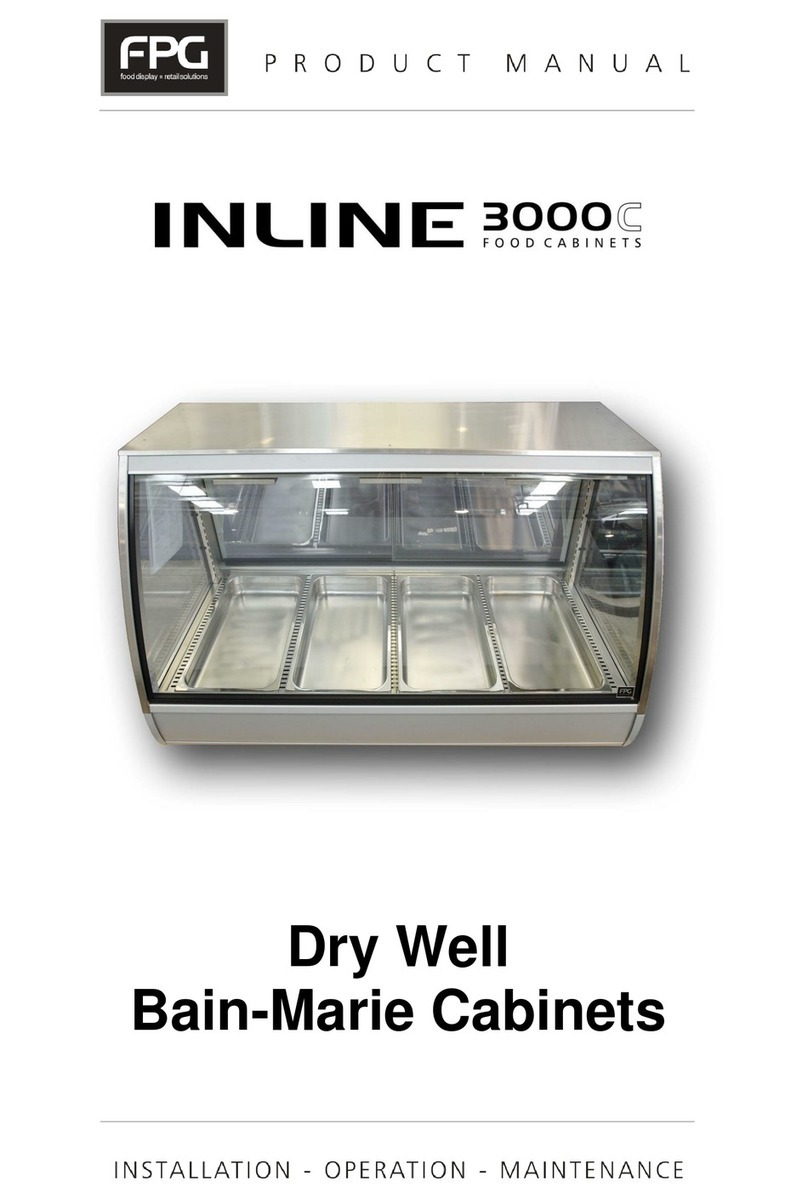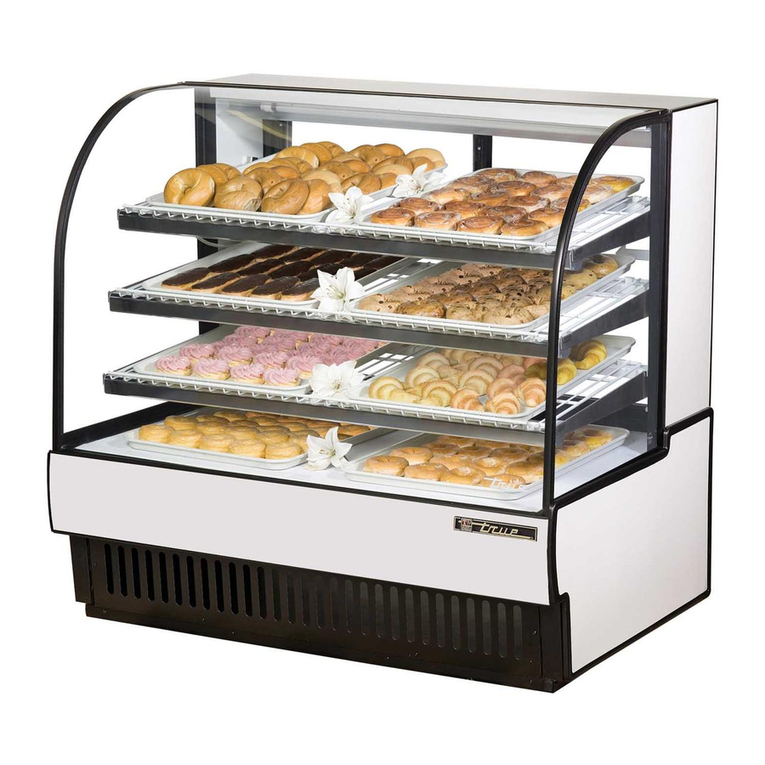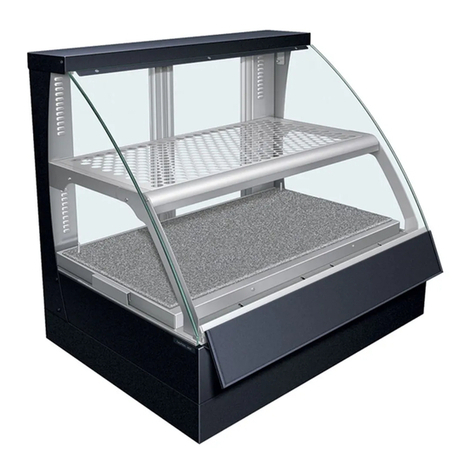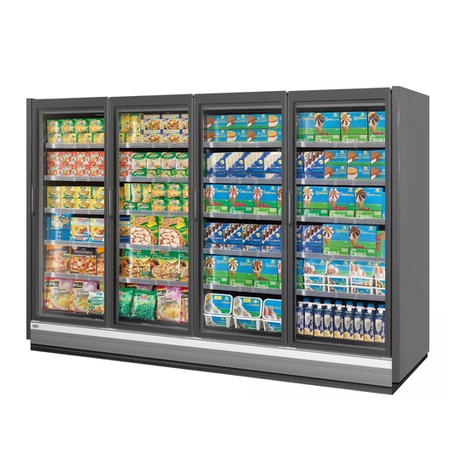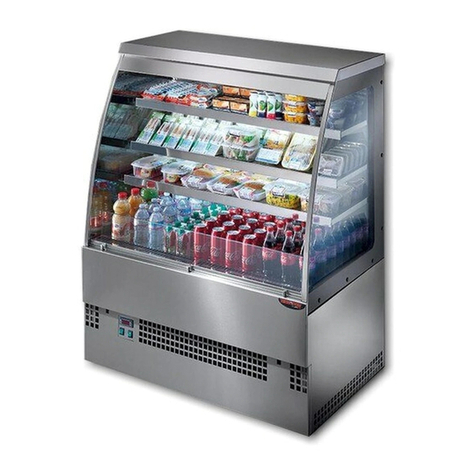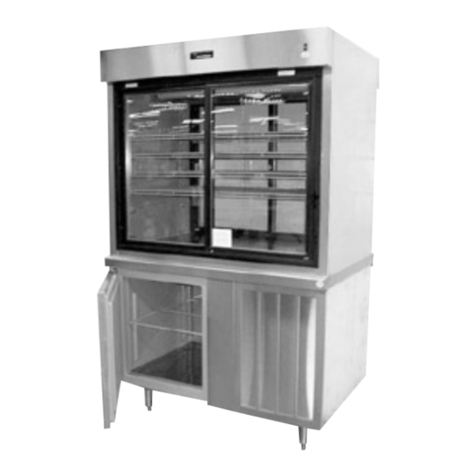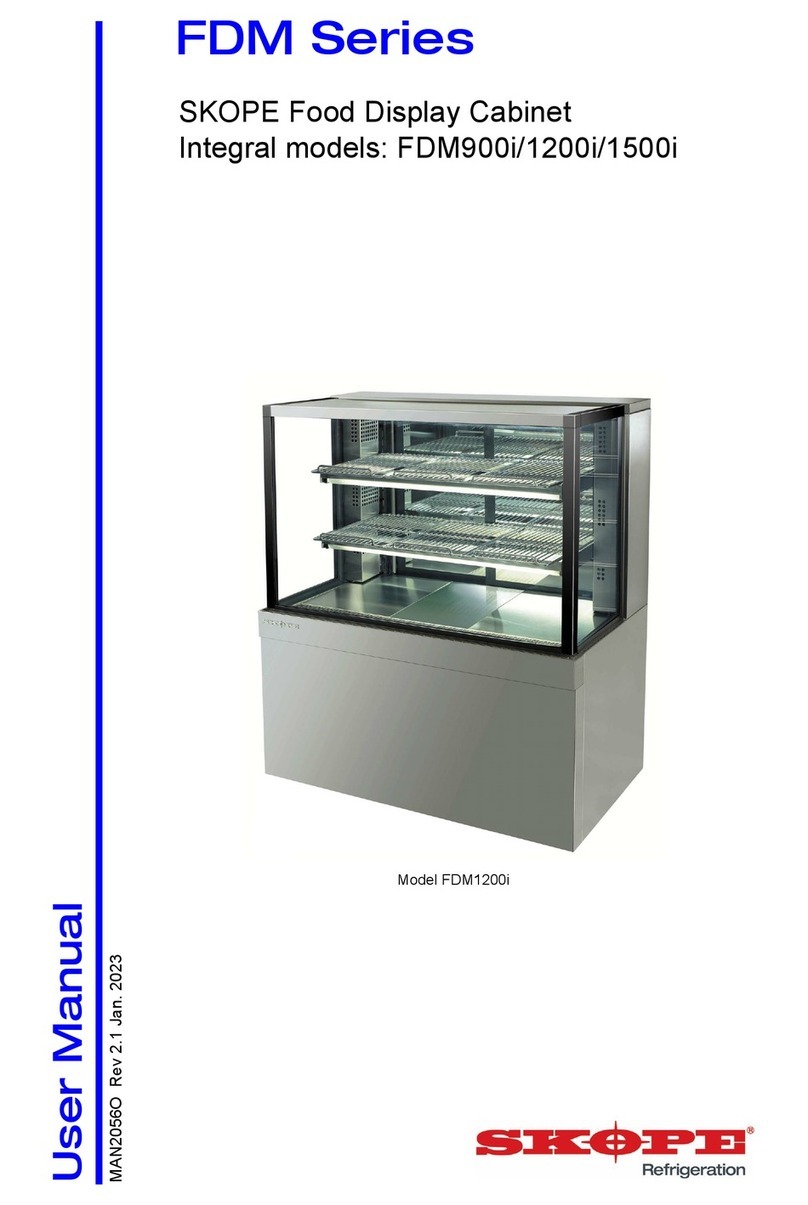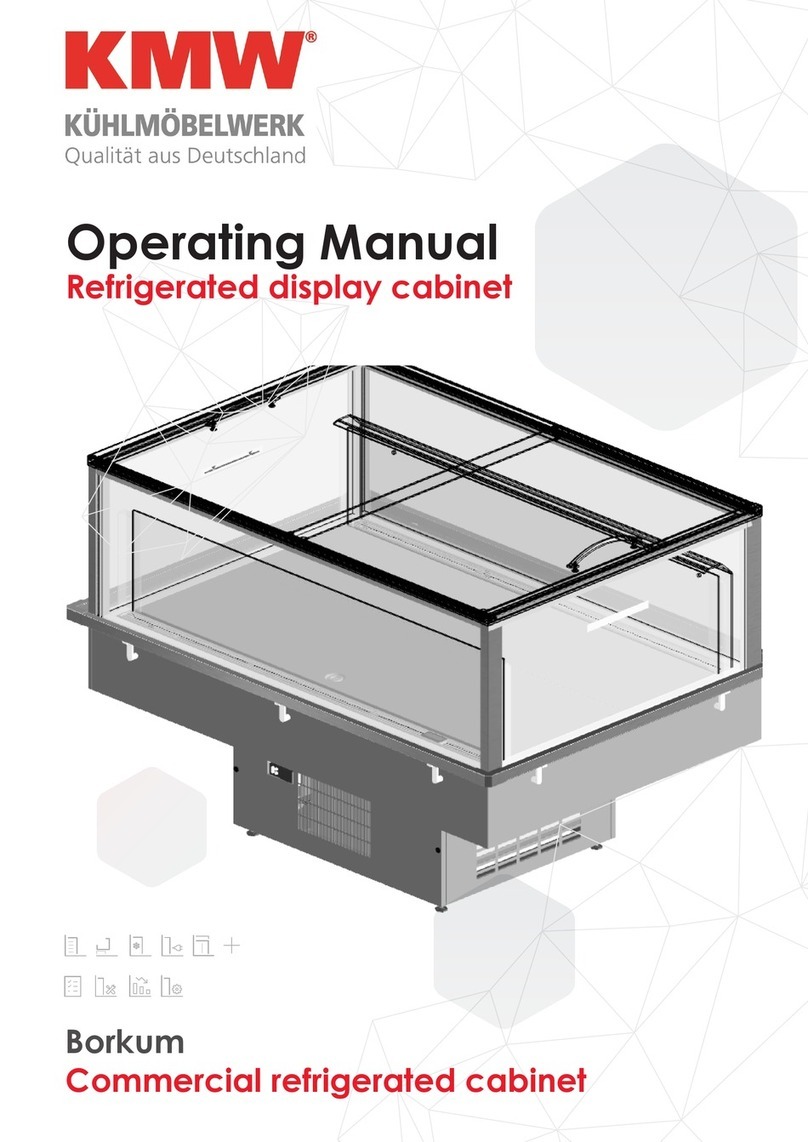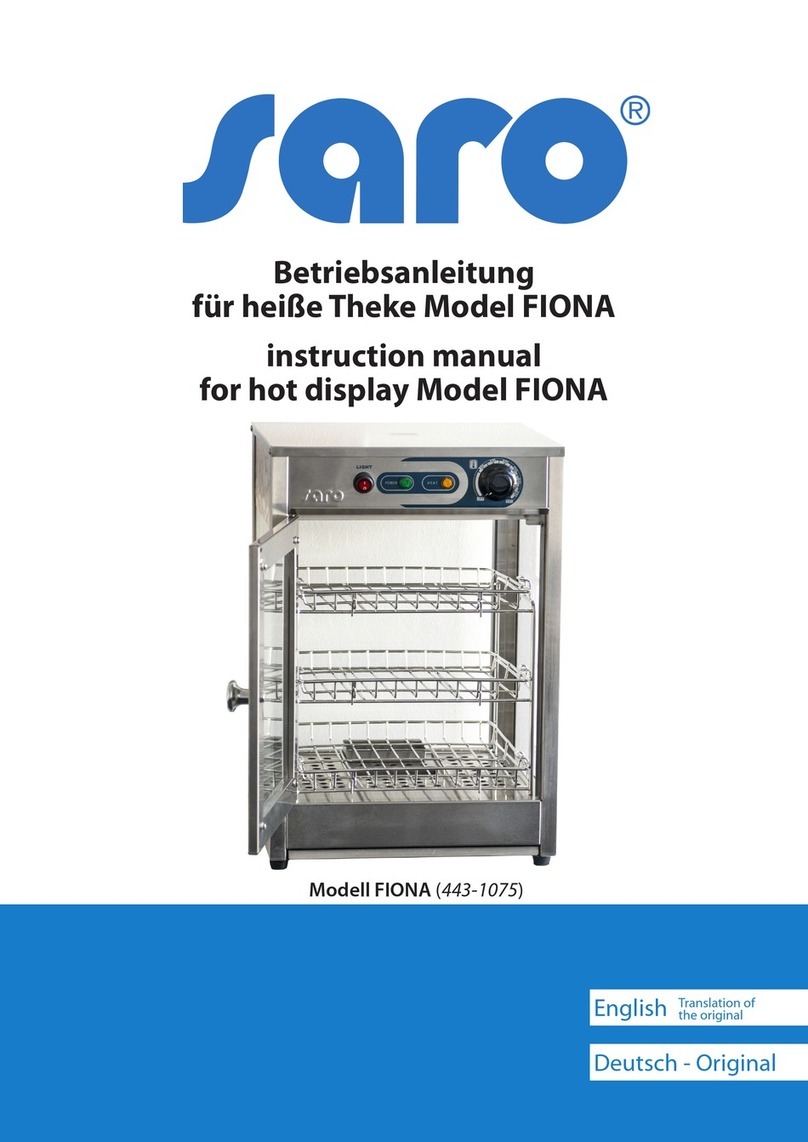
IGIC-ISM-0608
2
/CHINO
A publication of HUSSMANN®Chino
13770 Ramona Avenue • Chino, California 91710
(909) 628-8942 FAX
(909) 590-4910
(800) 395-9229
Keep this booklet with the case at all times for future reference.
General Instructions
Table of Contents
General Instructions.....................................................2
Cut and Plan Views ......................................................3
Installation.....................................................................3
Location ..................................................................................... 3
Uncrating the Stand................................................................... 3
Exterior Loading......................................................................... 3
Leveling ..................................................................................... 3
Bumper Installation Instructions................................................. 4
Plumbing .......................................................................8
Waste Outlet and P-TRAP......................................................... 8
Installing Condensate Drain....................................................... 8
Refrigeration .................................................................8
Refrigerant Type ........................................................................ 8
Refrigeration Lines..................................................................... 8
Control Settings ......................................................................... 8
Access to TX Valves and Drain Lines........................................ 8
Electronic Expansion Valve (Optional)....................................... 8
Thermostatic Expansion Valve Location.................................... 9
Expansion Valve Adjustment ..................................................... 9
Measuring the Operating Superheat.......................................... 9
T-STAT Location ........................................................................ 9
Thermometer Location............................................................... 9
Electrical......................................................................10
Wiring Color Code ................................................................... 10
Electrical Circuit Identication.................................................. 10
Electrical Service Receptacles (When Applicable) .................. 10
Field Wiring and Serial Plate Amperage.................................. 10
Wiring and Serial Plate Amperage........................................... 10
Ballast Location ....................................................................... 10
User Information......................................................... 11
Stocking................................................................................... 11
Case Cleaning ......................................................................... 11
Cleaning Mirrors ...................................................................... 11
Plexiglass and Acrylic Care ..................................................... 11
Cleaning................................................................................... 11
Waxing..................................................................................... 12
Antistatic Coatings................................................................... 12
Maintenance................................................................12
Evaporator Fans ...................................................................... 12
Copper Coils............................................................................ 12
Tips and Troubleshooting ........................................................ 12
Access Panels ......................................................................... 12
Electrical Wiring Diagrams........................................12
Wiring Diagrams ......................................................... 13
Appendices .................................................................15
Appendix A. - Temperature Guidelines .................................... 15
Appendix B. - Application Recommendations.......................... 15
Appendix C. - Field Recommendations ................................... 15
Appendix D. - Recommendations to User ............................... 16
This Booklet Contains Information on:
ISM Refrigerated Mini-Island Display:
Shipping Damage
All equipment should be thoroughly examined for shipping
damage before and during unloading.
This equipment has been carefully inspected at our factory
and the carrier has assumed responsibility for safe arrival.
If damaged, either apparent or concealed, claim must be
made to the carrier.
Apparent Loss or Damage
If there is an obvious loss or damage, it must be noted on
the freight bill or express receipt and signed by the carrier’s
agent; otherwise, carrier may refuse claim. The carrier will
supply necessary claim forms.
Concealed Loss or Damage
When loss or damage is not apparent until after equipment
is uncrated, a claim for concealed damage is made. Make
request in writing to carrier for inspection within 15 days,
and retain all packaging. The carrier will supply inspection
report and required claim forms.
Shortages
Check your shipment for any possible shortages of
material. If a shortage should exist and is found to be the
responsibility of Hussmann Chino, notify Hussmann Chino.
If such a shortage involves the carrier, notify the carrier
immediately, and request an inspection. Hussmann Chino
will acknowledge shortages within ten days from receipt
of equipment.
Hussmann Chino Product Control
The serial number and shipping date of all equipment
has been recorded in Hussmann’s les for warranty and
replacement part purposes. All correspondence pertaining
to warranty or parts ordering must include the serial number
of each piece of equipment involved, in order to provide
the customer with the correct parts.
This equipment is to be installed
to comply with the applicable
NEC, Federal, State , and Local
Plumbing and Construction
Code having jurisdiction.
